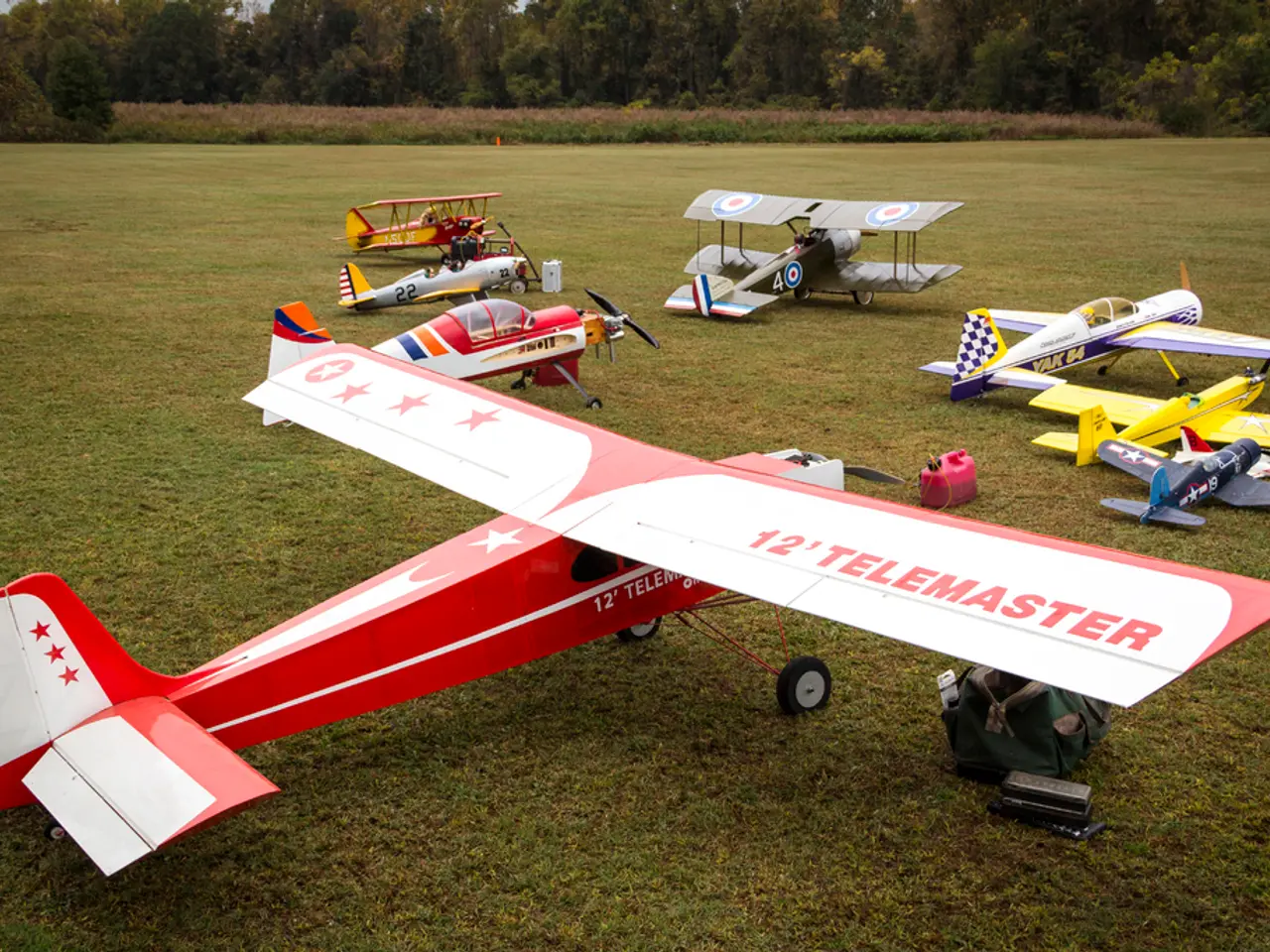Accelerating Hydrogen-Powered Test Flights for Airbus via Blue Condor
In a significant stride towards sustainable aviation, Airbus' Blue Condor project is set to launch the first series of in-flight tests using a hydrogen combustion engine. This project is a major milestone on Airbus' ZEROe journey.
The Blue Condor project consists of three flight test campaigns, each designed to validate different aspects of hydrogen-powered flight. The first campaign aims to validate the overall platform configuration and flight handling in real conditions. The second campaign, scheduled for November 2022, will see a modified Arcus-J glider operating exclusively on hydrogen. The third and final campaign, scheduled for early 2023, will involve a Grob Egrett aircraft guiding two Arcus-J gliders to the test altitude, releasing them, and mirroring their movements during back-to-back tests. One of the Arcus-J gliders will be modified with a hydrogen-propulsion system, while the other will remain unmodified.
The Arcus-J glider, originally a motorized sailplane, was retrofitted into a jet-powered sailplane by Bob Carlton of Desert Aerospace in 2016. It has a 20-metre wingspan and is equipped with a retractable PBS TJ-100 jet engine, allowing for self-launching and long cross-country capabilities. The modified Arcus-J glider is expected to take its first flight in July 2022.
The Blue Condor project is focused on analyzing contrails and emissions from a hydrogen combustion engine. Contrails, or "condensation trails," are clouds of ice crystals that can form behind an aircraft at high altitude. The project is interested in various elements when analyzing contrail properties, including ice crystal size, distribution, density, and number, as well as water vapour in the atmosphere.
The results of the Blue Condor project's three flight test campaigns will play an essential role in preparing the groundwork for the flight-testing phases of the ZEROe demonstrator using the A380 platform. Hydrogen combustion emits about 2.6 times more water compared to standard JetA/A1, requiring in-depth analysis to understand its full impact on contrails.
Detailed high-resolution modeling of early contrail evolution comparing hydrogen-powered aircraft contrails to kerosene ones within the same engine power class has shown some key differences. The initial ice crystal number behind hydrogen engines depends strongly on ambient temperature and humidity conditions and differs from kerosene contrails mainly due to the absence of soot particle emissions. Hydrogen contrails tend to have fewer ice nuclei initially, since soot particles—which act as ice nucleation sites in kerosene contrails—are nearly absent with hydrogen combustion. However, the survival of ice crystals during the early vortex phase is influenced by factors like ambient temperature, humidity, emitted water vapor, and aircraft characteristics, which affects the ultimate contrail optical properties and climate impact.
Overall, hydrogen contrails are expected to have fewer ice crystals, potentially reducing their radiative forcing compared to conventional kerosene contrails under similar flight conditions. This could lead to a lower climate impact for hydrogen-powered aircraft, a critical factor in assessing sustainable aviation technologies.
The Blue Condor project is not Airbus' only initiative aimed at understanding contrails produced by alternative fuel sources. The ECLIF3 and VOLAN flight demonstration projects are also currently underway. The first two flight test campaigns of the Blue Condor project will be carried out in Nevada, USA, while the third will be conducted in North Dakota, USA, in partnership with the University of North Dakota.
References: [1] Hydrogen-Powered Flight: A Look at the Blue Condor Project's Findings on Contrail Properties. (2022). Aviation Today. [3] The Blue Condor Project: Paving the Way for Hydrogen-Powered Flight. (2022). Airbus.
The Blue Condor project, a significant part of Airbus' ZEROe journey, is investigating contrails and emissions from hydrogen-powered flight. This research involves three flight test campaigns, one of which is scheduled for November 2022, featuring a modified Arcus-J glider operating exclusively on hydrogen. The finance sector and the technology industry are closely following the project's progress, as understanding the contrail properties of hydrogen-powered aircraft could significantly impact sustainable aviation. In conjunction with the Blue Condor project, Airbus is also actively involved in other initiatives like ECLIF3 and VOLAN, all aimed at exploring contrails produced by alternative fuel sources.








